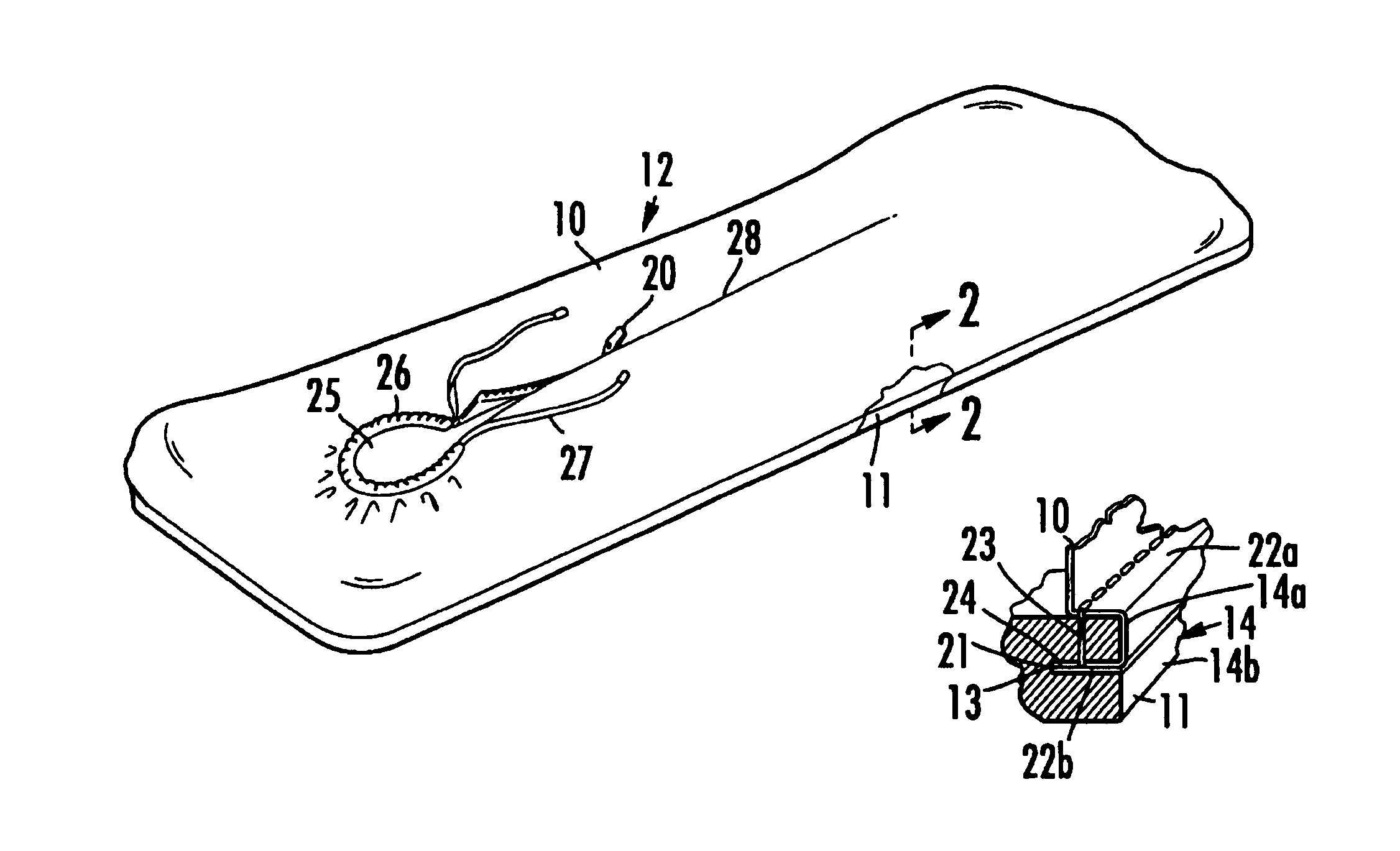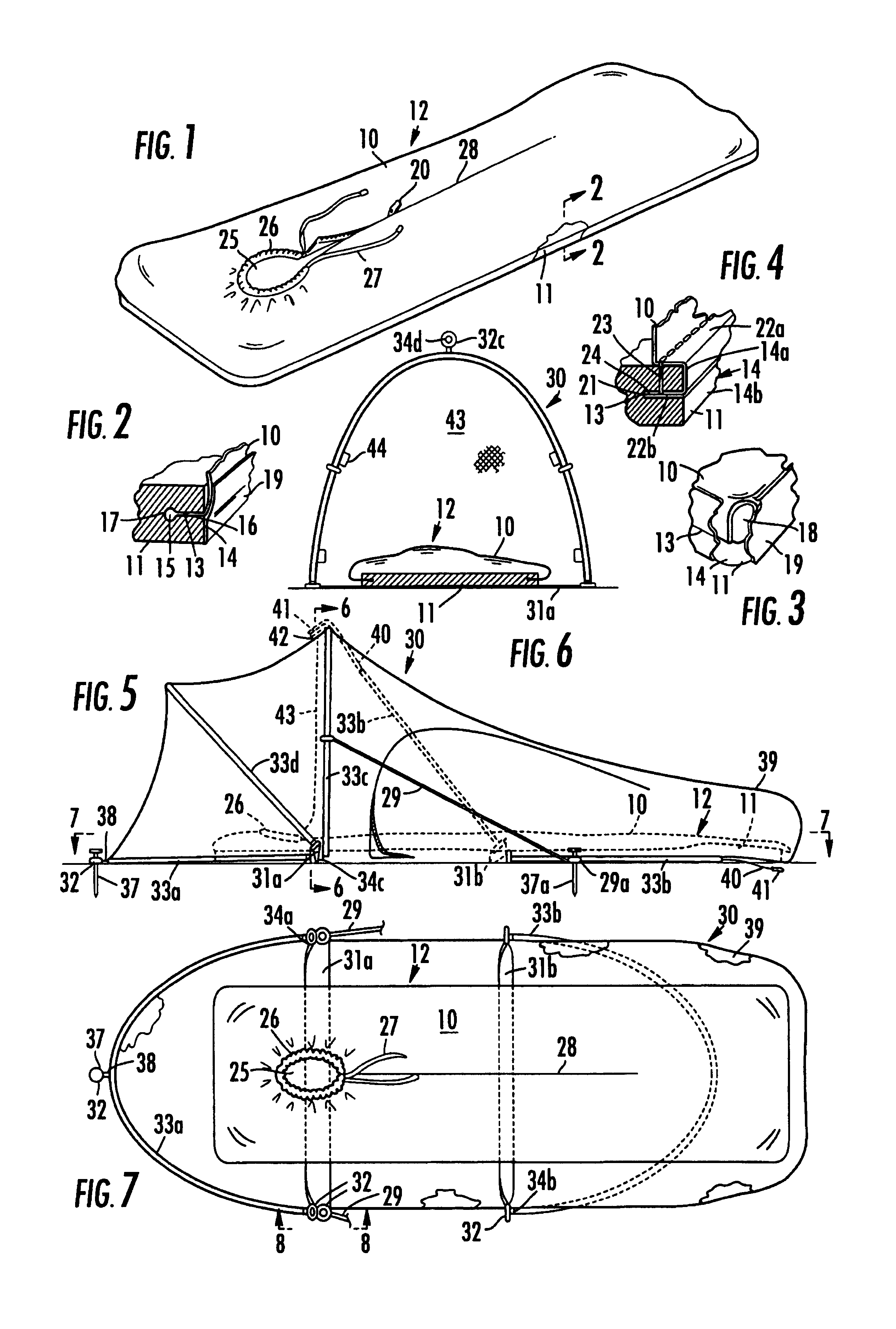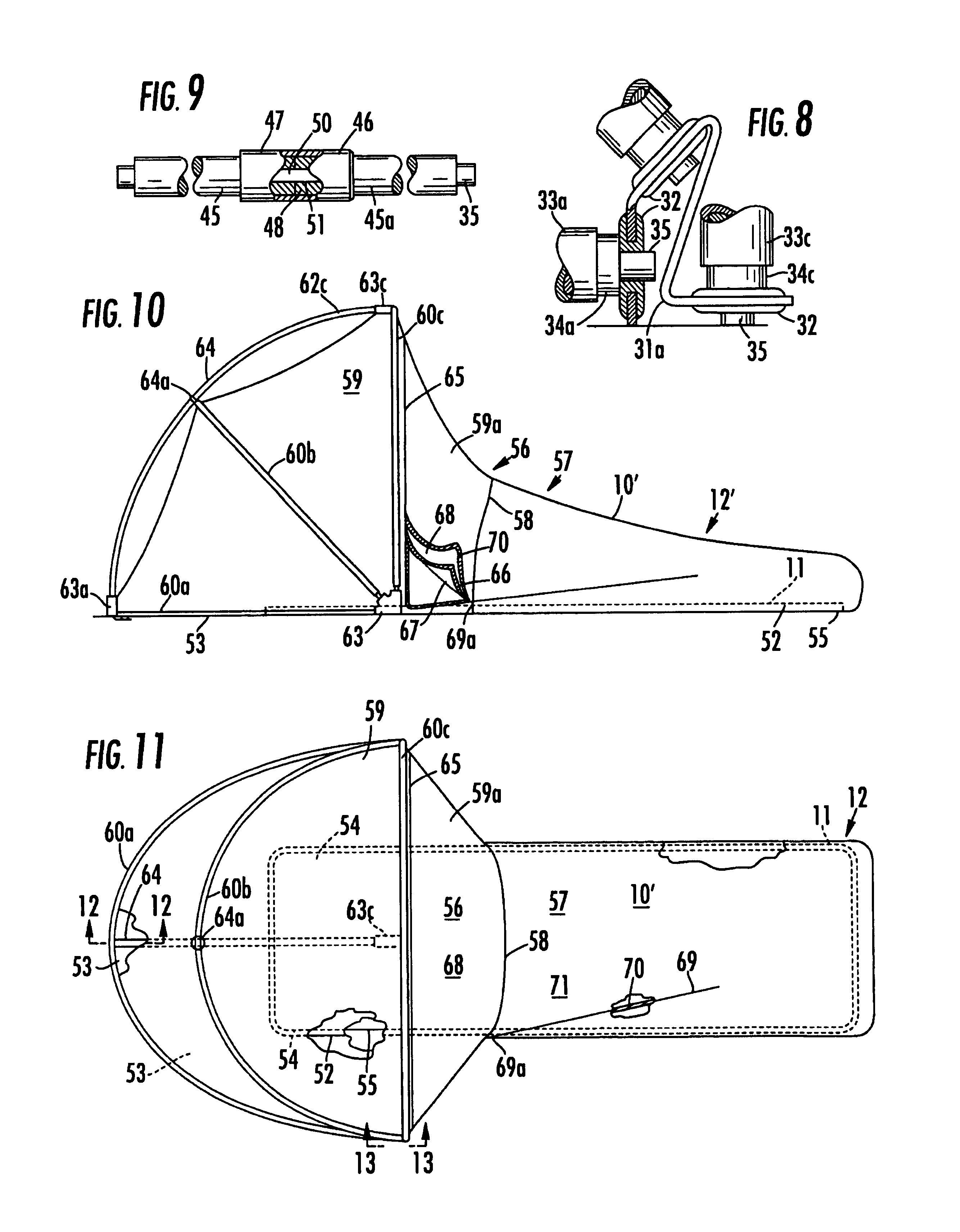Portable bivouac shelter
a bivouac and portable technology, applied in the field of portable bivouac shelters, can solve the problems of heavy, expensive, and a large portion of the material of the bivouac bag, and achieve the effect of reducing the weight and bulk of the bag
- Summary
- Abstract
- Description
- Claims
- Application Information
AI Technical Summary
Benefits of technology
Problems solved by technology
Method used
Image
Examples
second embodiment
[0034]In the invention (FIGS. 5-9) a rain shelter or canopy 30 is attached to the pad 11 via a first strap 31a and a second strap 31b that extend beneath the pad 11 and are attached to it transversely to its major axis at approximately the positions of the user's shoulders and hips, respectively. The first strap 31a holds two grommets 32 in each of its end portions, and the second strap 31b holds one grommet 32 in each of its end portions (FIGS. 7 and 8). The canopy 30 can be of any light-weight, water-proof material. Whereas the upper shell 10 of the bivouac bag is preferably air-and-vapor breathable to avoid water condensation in contact with an enclosed sleeping bag, this is not necessary for the canopy 30, which normally permits adequate ventilation around the bivouac bag 12 to prevent such condensation. As conventionally used, “air-and-vapor-breathable but waterproof” refers to any of the materials on the market that are impervious to water, but admit passage therethrough of ai...
third embodiment
[0041]the invention is shown in FIGS. 10-13. The rectangular, plastic-foam sleeping pad 11 (as described above) is bonded, at its bottom edges 52, to the floor 53 of the shelter (FIG. 11). The shelter floor 53 has a large, rectangular opening 54 slightly smaller than the pad 11, so that its edges overlap the edges of the pad by about one inch on all four sides—the overlap 55 being bonded to the bottom of the pad 11. The shelter is divided into a canopy section 56 and a foot-end section 57 by a juncture 58 (although the pad 11 is continuous between the sections). The foot-end section 57 has an outer shell 10′, as described above that is preferably made of water-proof but air-and-vapor-breathable material; and the canopy section 56 is preferably made of waterproof nylon fabric, or other waterproof material, also as described above. Similarly, the foot-end section 57 of the shelter is of a tubular configuration. However, since it is joined to the canopy section 56, it is not closeable ...
fourth embodiment
[0046]the invention is shown in FIG. 14. A canopy 30″, having a rectangular base, is formed of canopy material 30a, as described above, stretched over two long, flexible wands 34″ fastened together at their apexes, and to the inside of the top of the canopy 30 by a hook-and-loop strap 72 fastened thereto. The ends of the wands 34″ are seated in pockets 63′ fastened into the bottom corners of the canopy 30″. The head-end portion of the bivouac bag 12 (which is the same as shown in FIG. 1) extends through an opening 73 in the side 74 of the canopy 30″ toward the user's feet, and the shell 10′ of the bivouac bag 12 is joined to the opening 73 with a watertight seal. A floor 75 of the canopy material 30a surrounds, and is fastened to, the head-end portion of the sleeping pad by one of the methods previously described. However, the floor 75 in this embodiment covers only a portion of the rectangular base of the canopy 30″. Adjacent the head end of the bivouac bag 12, the floor 75 is bent...
PUM
 Login to View More
Login to View More Abstract
Description
Claims
Application Information
 Login to View More
Login to View More - R&D
- Intellectual Property
- Life Sciences
- Materials
- Tech Scout
- Unparalleled Data Quality
- Higher Quality Content
- 60% Fewer Hallucinations
Browse by: Latest US Patents, China's latest patents, Technical Efficacy Thesaurus, Application Domain, Technology Topic, Popular Technical Reports.
© 2025 PatSnap. All rights reserved.Legal|Privacy policy|Modern Slavery Act Transparency Statement|Sitemap|About US| Contact US: help@patsnap.com



